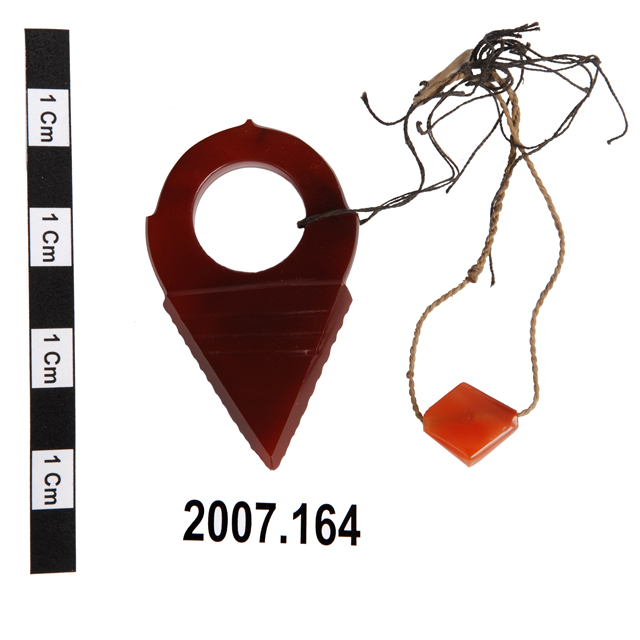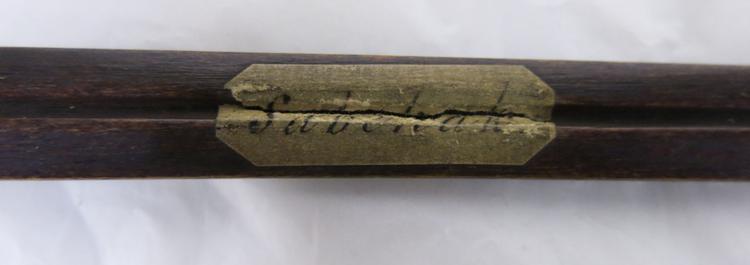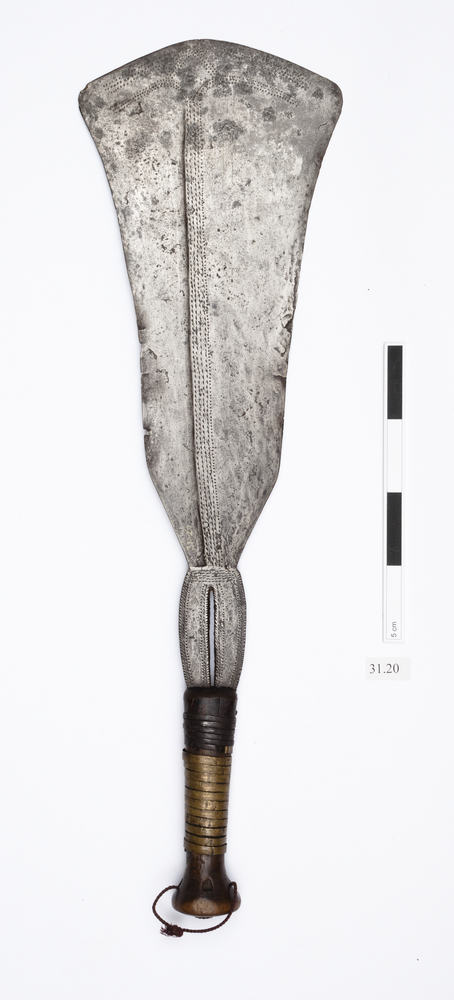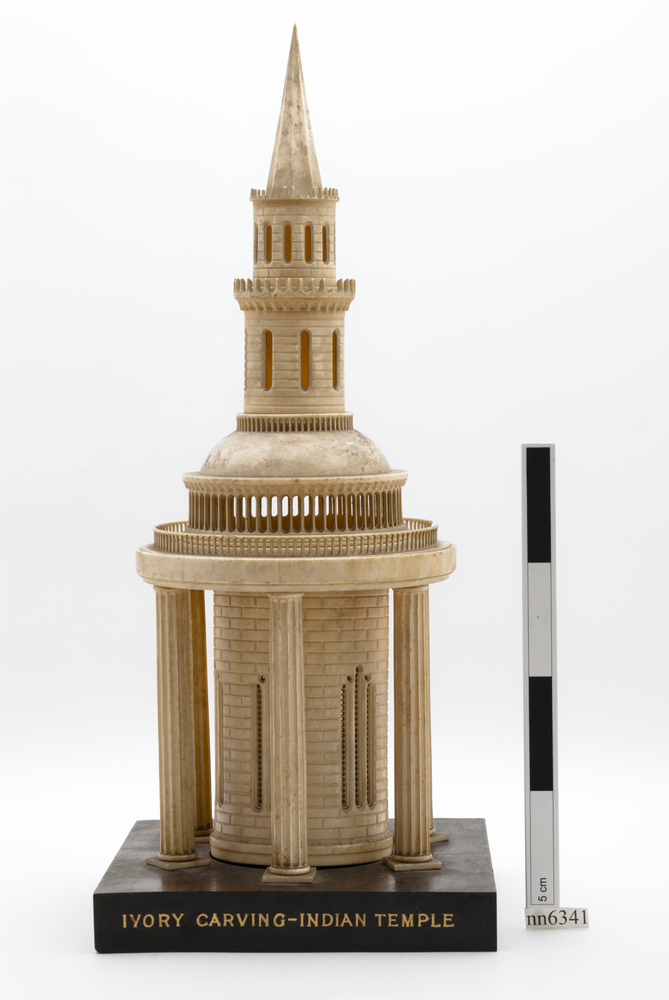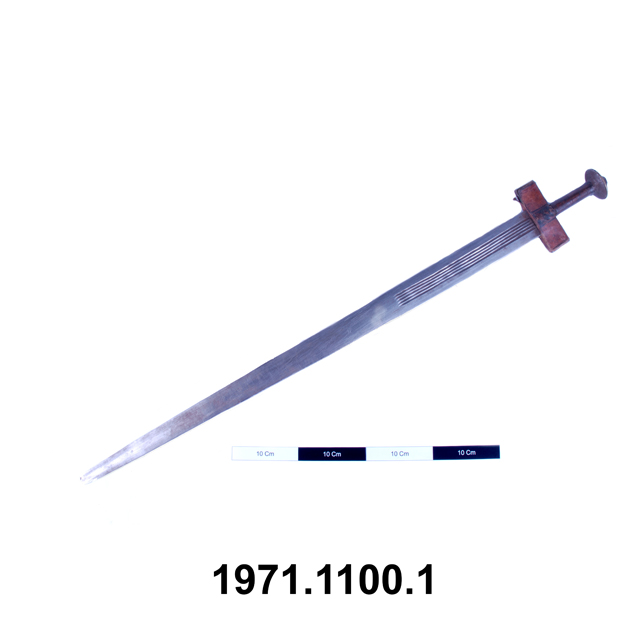
'Takuba' sword, with a cruciform hilt.
Metal sword with a long, flat blade. The tip of the blade is rounded. The upper third of the blade has been incised with five thick parallel lines on both sides. The cruciform hilt has a leather covering which has been decorated with black pigment. On one side there are two small crosses.
Item number 95 on Jeremy Keenan's item list. A Tuareg sword - 'takuba' in Tamahaq. Keenan acquired this object from the Kel Ahaggar people in Tamanrasset. Price paid: 200 dinar. See fig 121a in Johannes Nicolaisen's 'Ecology and culture of the pastoral Tuareg, with particular reference to the Tuareg of Ahaggar and Ayr' (Nicolaisen, 1963, p 169, fig 121a). Swords are made by specialist blacksmiths ('inadan'). The sword represents nobility and courage, and is believed to possess supernatural powers. It is a status symbol and was once reserved for the Tuareg nobility ('imuhar', 'imajeren') and was given to a young man together with his first veil ('tagelmoust') when he reached puberty. Today the sword is mainly carried on special occasions. Some of the very old sword blades came from Solingen or Toledo. Blades nowadays are forged from older swords or car parts. Nicolaisen writes that the sword may have at times served as a hunting weapon - he was told by Tuareg from the Aïr that wild animals were occasionally killed with the sword (Nicolaisen, 1963, p 167).
fighting



